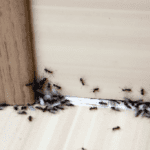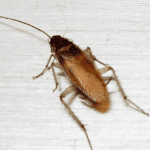What are the items that need sanitizing and we probably forget

January 10, 2023
/
What are the items that need sanitizing and we probably forget
What are the items that need sanitizing and we probably forget
Disinfection is the solution to combating the new coronavirus in our daily lives. Health organizations recommend using a 70 percent alcohol solution, household disinfectant spray, or household diluted bleach solutions to clean and disinfect so-called high-use surfaces in our daily lives. These surfaces include, but are not limited to, tables, chairs, knobs, switches, remote controls, handles, desks, toilets and sinks. But there are many surfaces that can be omitted. In fact, some of the dirtiest places in the house are hiding in the most unlikely places. Below is a list of items you should start enjoying now if you haven't already. Cell Phones: Think of your smartphone as the third hand you never wash. Most people tend to move their phones about 47 times a day, giving smaller phones many times to move from fingers. To clean your phone, spray an alcohol-based sanitizer directly onto a soft, lint-free cloth and wipe the device — front, sides, and back — while it's turned off and unplugged. Do not use bleach. Wipe your device and let it dry before restarting it. Keyboards: Cleaning your keyboard is perhaps more important now than ever as many of us work from home – and the same goes for your mouse – if you use one. According to a related study, computer or laptop keyboards can be 20,000 times dirtier than a toilet seat. To disinfect, use a sponge or soft cloth with isopropyl alcohol and wipe the top and sides of each key. Then carefully clean the surface and bottom of the keyboard. Use a new wipe or disinfectant wipe to clean the mouse. Glasses: You shouldn't touch your face, but chances are you keep touching your glasses. Germs from your fingers, face and exposure to the outside world can collect on your arms and lenses. To disinfect your glasses, wipe them with a disinfectant wipe or a cloth soaked in disinfectant liquid. You can use a drop of dishwashing liquid and a clean, lint-free towel to clean the lenses if you don't have a special lens cleaner, as well as a microfiber cloth. Sponges: If you didn't know before, you do now: Sponges are dirty. According to one study, sponges are the dirtiest item in your home – even dirtier than the toilet bowl – with an average of over 54 billion bacterial cells. To clean your sponges, you can create a product of one part bleach to nine parts water or microwave in a bowl of water on high for about thirty seconds.Even if you clean your sponge after each use, experts say you should change sponges every week to keep your food surfaces clean and hygienic. Refrigerator door handle:Refrigerator door handles are among the dirtiest things in the kitchen, despite the fact that they don't come into direct contact with food. So don't skip them when cleaning other surfaces in your kitchen, such as tables and counters. Microwave Buttons: Microwave buttons are also among the most dirty surfaces in your kitchen. Think how many people touch this surface to heat their food every day. Clean the door knobs and handle with a disinfectant spray when you do your daily kitchen cleaning. This also applies to any other button surfaces around the house that you may neglect. Toothbrush holder: Toothbrush holders in the bathroom can also harbor germs. In fact, bacteria from the toilet is likely to reach the base toothbrush, we use the cistern, as depending on where the toilet is located. Make sure you regularly disinfect the bases when cleaning your bathroom. Toothbrushes and electric toothbrush heads should also be replaced frequently. Driving a car: A driving car has up to nine times the amount of germs in a public toilet. Just think of the times you'll be out shopping or hitting the gas station and all the items you've grabbed along the way. All these germs can easily be transferred to your steering wheel. Use a microfiber cloth and disinfectant spray to wipe down your entire steering wheel every time you get in and out of the car.What are dust mites and how to get rid of them?
Showers: Disinfect your shower regularly by using a bag of bleach around your shower and letting it sit overnight. Discard any remaining medication before using the shower again. Laundry baskets: Bacteria from both your body and others around you will get on your clothes and end up in the laundry baskets. Especially if you are washing sheets and towels from someone with the virus (which should also be done regularly), it is recommended that you clean your basket with a disinfectant frequently Handbags: According to a study, handbags contain more bacteria than the seat toilet. If you're worried about ruining your bag while sanitizing it, follow some tips for the right result. To clean a leather bag or even a leather bag, use a small amount of hand sanitizer on its surface with a cloth. To clean a cloth bag, dampen a microfiber cloth with isopropyl alcohol and wipe the bottom of the bag and the handles with it. Allow the bag to dry overnight in a cool place before using it again. Letterbox handle: Letterbox handles are also quite dirty and likely to be unable to separate ideas. Make sure you sanitize your mailbox handle every time you go out to pick up that day's mail. Your postman, who can't work from home, will also appreciate it. Read hundreds of articles that will answer any question about #cleansecta by clicking here.Recent Posts
cleansecta.gr
Mosquito protection measures
cleansecta.gr




